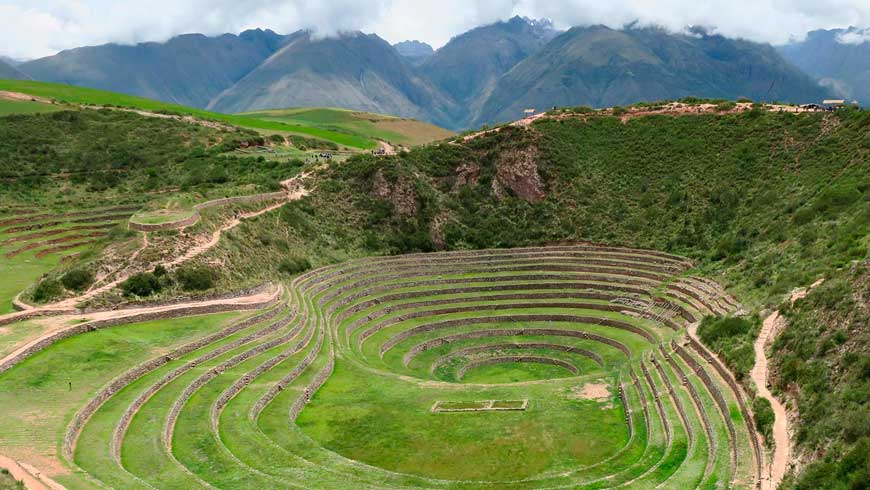Hidden in the heart of Peru’s Sacred Valley, the archaeological site of Moray is one of the most fascinating and mysterious remnants of the Inca civilization. Famous for its stunning circular terraces, Moray is believed to have been an agricultural laboratory where the Incas experimented with different crops and microclimates. This guide will take you through everything you need to know to explore Moray, from its history and significance to practical travel tips.
The History and Significance of Moray
Moray consists of a series of concentric terraces that form deep, bowl-like depressions in the earth. Archaeologists believe that these terraces were used by the Incas to study how crops adapted to different altitudes and temperatures. The temperature difference between the top and bottom terraces can be as much as 15°C (27°F), allowing for a variety of growing conditions. This sophisticated agricultural innovation demonstrates the advanced knowledge the Incas had about farming and climate control.
How to Get to Moray
Moray is located about 50 kilometers (31 miles) from Cusco, making it an ideal day trip for those exploring the Sacred Valley. You can reach Moray in several ways:
- By Tour: Many guided tours from Cusco include a visit to Moray along with the nearby Maras Salt Mines.
- By Taxi or Private Car: Renting a private vehicle allows for a more flexible and personalized experience.
- By Bike or Hike: Adventurous travelers can enjoy the scenic bike trails or hiking routes leading to Moray from Chinchero or Maras.
Best Time to Visit Moray
The best time to visit Moray is during the dry season, from May to September. During these months, you’ll experience clear skies and pleasant temperatures, making for a more enjoyable visit. However, if you prefer fewer crowds, visiting in the shoulder seasons (April and October) can be a great option.
What to See and Do in Moray
- Explore the Circular Terraces: Walk around the site and admire the ingenuity of the Inca agricultural system.
- Photography: The unique landscape of Moray offers fantastic photo opportunities, especially in the early morning or late afternoon light.
- Combine with Maras Salt Mines: Just a short drive away, the Maras Salt Mines are a stunning natural and historical site that pairs well with a visit to Moray.
Travel Tips for Visiting Moray
- Altitude Considerations: Moray sits at approximately 3,500 meters (11,500 feet) above sea level. If you’re not acclimated, take it slow and stay hydrated.
- Entry Fee: Moray is included in the Cusco Tourist Ticket (Boleto Turístico), which grants access to multiple archaeological sites in the region.
- Bring Sun Protection: The high-altitude sun can be intense, so wear sunscreen, sunglasses, and a hat.
- Wear Comfortable Shoes: The terrain can be uneven, so sturdy footwear is recommended.
Conclusion
Moray is a must-visit destination for history buffs, nature lovers, and photography enthusiasts alike. Its remarkable terraces provide insight into the agricultural brilliance of the Inca civilization, and its scenic beauty makes it a truly unforgettable stop in Peru’s Sacred Valley. Whether you visit as part of a tour or explore independently, Moray offers a glimpse into the ingenuity of the ancient Inca culture.










Comments are closed